- Home
- Robert Jordan
The Wheel of Time Companion Page 3
The Wheel of Time Companion Read online
Page 3
Agirin. A Maiden of the Spear of the Shelan sept of the Daryne Aiel who died at Dumai’s Wells; Rand added her name to the list of women who died for him.
Agni Neres. The misogynistic, smuggling captain of the Riverserpent who gave passage to Nynaeve, Elayne and others to Salidar. He referred to them as “wenches.” He was from Ebou Dar, and had a wife and a flock of children there. He was tall and bony, with a dour, narrow face and ears that stuck out from his head.
Agora, Haviar. See Haviar Agora
Ahan, Kenley. A young Two Rivers man who joined Perrin’s band. He was killed in an ambush by Trollocs.
Ahan, Marisa. See Marisa Ahan
Ahan, Mistress. A woman of the Two Rivers; she was the mother of Kenley.
Ahelle, Meane sol. The Fourth Age composer of “Glory of the Dragon.”
Ahf’frait. A Trolloc tribe. Its symbol was a whirlwind.
Ahmid, Toma dur. The developer of the Toman Calendar.
Ahzkan, Tumad. See Tumad Ahzkan
Aiden Shimura. A Sea Folk Aes Sedai of the Brown Ajah and the loyalist contingent. She worked in the Thirteenth Depository of the White Tower Library. Like all Sea Folk Aes Sedai, she was weak in the One Power. She lied about her age when she came to the White Tower. She was a shy, withdrawn woman with a very dark complexion, round figure, black hair and dark eyes. Aiden, Zemaille and Nyein shared rooms in the upper levels of the Library and spent most of their time either there or in the Thirteenth Depository. Alviarin passed Aiden and Zemaille in the Library when she returned from Tremalking.
Aiel. Old Tongue for “dedicated.” They were the people of the Aiel Waste, descendants of pacifists who served the Aes Sedai during the Age of Legends. Fierce and hardy, they veiled their faces before they killed. Deadly warriors with weapons or bare hands, they would not touch a sword even on the point of death, or ride a horse unless pressed. Aiel called battle “the dance,” and “the dance of the spears.” They were divided into twelve clans: the Chareen, the Codarra, the Daryne, the Goshien, the Miagoma, the Nakai, the Reyn, the Shaarad, the Shaido, the Shiande, the Taardad and the Tomanelle. Each clan was divided into septs. They sometimes spoke of a thirteenth clan, the Clan That Is Not, the Jenn, who were the builders of Rhuidean. All believed that the Aiel once failed the Aes Sedai and were banished to the Aiel Waste for that sin, and that they would be destroyed if they ever failed the Aes Sedai again. See also Aiel warrior societies, Aiel Waste, bleakness, Da’shain, gai’shain, Jenn Aiel, Rhuidean and Tuatha’an
Aiel kinship. Aiel relationships of blood were expressed in complex ways which outsiders considered unwieldy, but which Aiel considered precise. A few examples must suffice to demonstrate, as an entire volume would be needed for a full explanation. Beyond this the complications grow and are thickened by such factors as the ability of close friends to adopt each other as first-brother or first-sister. When it is also considered that Aiel women who were very close friends sometimes married the same man, thus becoming sister-wives and married to each other as well as to him, the convolutions become even more apparent.
One was considered to be more closely related to one’s mother than to one’s father. First-brother and first-sister had the same mother, whether or not they had the same father. If two women were sister-wives, however, their children were considered first-brothers and first-sisters to each other.
Sister-mothers and sister-fathers were first-sisters and first-brothers of one’s mother; thus, aunt and uncle through one’s mother, and more closely related to one than aunts or uncles through one’s father. The term was not used for one’s mother’s adopted first-sister who was also her sister-wife; she also was simply one’s mother.
Brother-father and brother-mother were the first-brothers and first-sisters of one’s father.
Second-brother and second-sister referred to the children of one’s mother’s first-sister or first-brother; thus, a cousin through one’s mother. This term was also used for a child of one’s father by a sequential marriage, as opposed to a child of a sister-wife.
A father-sister or father-brother was the child of one’s father’s first-brother; thus, a cousin through one’s father. Father-sisters and father-brothers (aunts and uncles through one’s father) were not considered as closely related as second-sisters or second-brothers, just as one was more closely related to one’s mother than to one’s father.
Greatfather or greatmother referred to the father or mother of one’s own mother, while the parents of one’s father were second greatfather or second greatmother.
An additional complication was that sister-wives were considered married to each other as well as to their husband; also, the ability of women to adopt one another as first-sisters added wrinkles.
Second-mother and second-father were mother-in-law and father-in-law equivalents.
A boy or man was expected to obey his mother before his father; a girl or woman was expected to obey her father before her mother. There were circumstances, however, when one’s second-mother took precedence over one’s mother, and when a second-father took precedence over one’s father.
It was possible to adopt someone as a first-brother or first-sister by saying the proper words in front of the individuals’ Wise Ones. This was most common among women, and nearly unheard of among men. There were occasionally cross-gender adoptions, but these were almost as rare as men adopting one another. Such an adoption brought in all of the familial relationships, duties, responsibilities, etc. For example, the sister-mother of one’s first-sister was of course one’s sister-mother.
As one was closer blood kin to one’s mother than to one’s father, the degree of relationship by rank was:
1) mother, first-brother, first-sister
2) father; greatmother and greatfather (maternal grandparents)
3) sister-mother, sister-father (maternal aunts and uncles)
4) second-brother, second-sister (maternal cousins)
5) second greatfather, second greatmother (paternal grandparents)
6) brother-father, brother-mother (paternal aunts and uncles)
7) father-sister, father-brother (paternal cousins)
Aiel law. Since most of Aiel life and activity was regulated by ji’e’toh, the Aiel did not have a great many laws. Most of these had to do with water, murder, theft or harming certain persons. While Aiel law was centered around and based on ji’e’toh, the two were not the same. It was possible to incur toh without breaking the law, though it was seldom possible to break the law without incurring toh. Generally, the more serious the offense under the law, the more serious the toh.
The few universal laws were a prohibition on murder, a prohibition on destroying or fouling water, a prohibition on theft (remembering that the fifth is not theft) and a prohibition on harming a Wise One, a pregnant woman, a child or a blacksmith.
These all-encompassing laws had been agreed to over the years by chiefs and Wise Ones. For a violation of one of these, a clan was expected either to hand over the accused for trial or to try the person and carry out punishment themselves. While there were cases of clans managing to avoid doing either, it was usually considered a matter of honor to do exactly that. It was also often considered a point of honor to give a harsher punishment than would have been handed out if the accused had been found guilty by those of the other clan.
Most Aiel trials consisted of the sept chief acting as judge with twelve men and twelve women, all chosen by lot, as a jury. An appeal could be made to the clan chief, who sat as judge with a jury of twelve Wise Ones. In either case, the jury decided guilt or innocence, and the judge decided the penalty.
In some cases a court of twelve Wise Ones could also sit, without a chief. Such a case was the instance of deciding whether to declare someone da’tsang, a despised one.
It was possible to be acquitted in the trial despite being guilty if one had managed to meet the toh incurred.
An Aiel considered it shaming to the extent of putting himself, or herself, outside humanity to
fail to appear for a trial or to meet a sentence.
There was a death penalty and none other for: killing a Wise One, killing a pregnant woman, killing or sexually molesting a child and killing a blacksmith. Unlike any other homicide, there were no excuses for these, not even self-defense.
Murder was defined by circumstances; for example, there were times when stabbing a man in the back was not murder (in battle, say, or on a raid) and times when it was. The penalty for murder was usually death, but there were ways to meet the toh involved, although the killer would have to bring the closest survivors of the murdered person (“close” defined first as a surviving spouse or spouses, then the mother, then the father, etc.) to declare to the court that the accused had met toh. While the accused still set his own toh, this was the only time when, in effect, someone else could say whether one had met it sufficiently, though it was not stated in that way.
There was a death penalty for destroying a source of water. Fouling a source of water was a lesser crime, but not by much. Fouling water ranked with breaking oath or violating an agreed truce.
The Aiel death penalty was starkly simple. One was trussed like an animal for slaughter, the throat was slit and the corpse left for the vultures.
There were also strong penalties for harming a Wise One, a pregnant woman, a child or a blacksmith.
Some laws held only inside one clan, as well. They would certainly be enforced on anyone within clan lands, however.
The Aiel had no prisons nor any tradition of confinement for offenses. With the exception of the penalties for murder, destroying a water source, breaking oath, violating truce or fouling water, penalties were usually corporal punishment of some sort, being flogged or beaten publicly. There could be more than one beating, in more than one site. Someone who fouled a water source, for example, could well have expected to be beaten in every hold of the clan that owned the water source; and, if the fouler belonged to another clan, in every hold of the fouler’s own clan as well.
Destroying water was considered so heinous that clans in blood feud had carried out sentence on someone who committed the crime on water owned by the other clan.
Since one was supposed to have set the worth of one’s own honor, it was believed that one should meet the toh incurred by breaking a law entirely on one’s own. As stated, meeting it to a degree that satisfied the jury resulted in acquittal. Attempting to meet it but failing, say, because there wasn’t enough time before the trial, could have been considered mitigation, in proportion. Failing even to attempt to meet toh would certainly have resulted in a harsher sentence.
The Aiel had a very rigid tradition of prisoner treatment. There were gai’shain, there were hostages exchanged for various reasons, there were captured truce-violators, oathbreakers and water-foulers, and there were wetlanders taken in the Waste. (There was no provision for holding someone for trial or for execution of even a death sentence; you were expected to show up at the proper time and place, and failing to do so placed you on a par with vermin.) These were the only classifications they knew. Hostages were well treated unless there was a violation, and what was done then was determined under ji’e’toh by the violation. Any Aiel taken captive expected to be made gai’shain (except for truce-violators and oathbreakers, who were refused the white, and instead were put into black robes and expected a period of humiliation before being handed back to their own people under as humiliating circumstances as could be arranged). Wetlanders taken in the Waste fell into two classes: Treekillers (Cairhienin) who were taken to the tradeholds along the Cliffs of Dawn or the Great Rift and traded like animals; and other wetlanders who lacked the protection of being Tuatha’an or peddlers or gleemen. These unprotected wetlanders were usually killed out of hand, but sometimes given a chance to find their way back out, often naked and with a single waterskin.
Truce-violators and oathbreakers were allowed no garments but the black robes. They were worked, but generally at useless labor. If they were given useful labor, it was always under humiliating circumstances, such as nakedness. Beatings with a strap or switch were common, and they were directed almost like animals, a word of command, a gesture, a slap with a strap to get them started.
Examples of useless labor: Digging a deep hole, often with an implement as small as a spoon, then filling it in only to dig another and fill it, and so on. Being made to carry a heavy sack of rocks or sand around on one’s back. Being made to run with a container of water; if you spilled any, the rest of the contents would be all the liquid you got that day, and you were forced to run to the point of collapsing. Running between two piles of dirt, scooping up a flat basket full at one place and emptying it at the other; when you had moved all of the dirt from one place to the other, you took it back. Pushing a rock ahead of you across the ground on your knees. Pulling a weighted sled across the ground for hours.
Examples of humiliation: The beating, of course, and the enforced public nudity. Carrying water to or serving gai’shain, as though you were gai’shain to gai’shain. Being made to kneel, to offer things with your wrists turned up, to lower your eyes when speaking to others or behave in other ways the Aiel considered submissive. Various forms of bondage—being caged, confined or bound—were considered very shaming.
Da’tsang (Old Tongue for “despised one,” or “one who is despised”) was the name given to criminals among the Aiel—criminals as opposed to simply being somehow on the wrong side of ji’e’toh, though a persistent violation of ji’e’toh or a refusal to meet an obvious toh might well have resulted in this designation. Generally it was for those who had committed rape, or broken truce or oath, or fouled water, or stolen (as the Aiel saw it, the fifth taken on a raid certainly did not count), or killed or sexually abused a child, a pregnant woman, a Wise One or a blacksmith. (Among the Aiel, ordinary murder was a thing for vengeance by family, sept, clan or society, depending on who did the killing and under what circumstances. The murderer was not da’tsang.)
In this, the Wise Ones acted as magistrates; only Wise Ones could name someone da’tsang. These criminals owed toh far beyond the ordinary. It was something not referred to once it was proclaimed; saying the word in the proclamation even, the speaker grimaced as if tasting something filthy. The black robe was the mark of da’tsang.
Da’tsang were severely limited in speech, since they were considered not quite human. They were not held to total silence, but were allowed to speak only in limited fashion. A few simple requests were allowed, and answers to questions, though few were asked. They were allowed to speak enough to understand the tasks they were given, not much more than that. If more than one da’tsang was present in a camp—a fairly rare circumstance, historically—they were kept apart and not allowed to communicate, so they could not lend one another support or plot escape.
The possessions of someone declared da’tsang were normally destroyed, including any jewelry, in the case of a woman. At least, those possessions they had with them. No one would want to use or own something taken from a da’tsang.
The Aiel had no tradition of how to deal with wetlander prisoners taken outside the Waste. The Shaido solved this by considering them as gai’shain, though with the difference that since they did not follow ji’e’toh, there was no need to release them after a year and a day. The other Aiel struggled with this problem.
Aiel methods of putting someone to the question centered around the Aiel view of life and the concepts of ji’e’toh. Shame was more biting than pain. They did use pain, but it was the shaming circumstances of it that were considered the real torture, not the actual amount of pain. Thus, they did not use pincers or hot irons or the like, as Whitecloak Questioners did. Enforced nudity was always a part, along with the useless labor, and beatings for failure to cooperate in your own humiliation. You could have been hung up by your ankles or wrists, switched or strapped; the Aiel could have used nettles or other stinging or burning plants, whole or ground to powder or made into oils and unguents applied to various parts of the
body.
The key point was that you were shamed until you could bear the shame no more, and in truth, with Aiel, this worked faster than the Questioners’ methods. Aiel often held out to death against wetlander methods of extracting information. The converse was not true, however. While wetlanders often began thinking that the Aiel methods were tame compared to “real” torture, the combination of pain, very much unrelenting if milder than hot irons, with shame (few wetlanders took enforced public nudity even as well as Aiel) and unceasing labor from waking to sleeping—all of that together usually broke a wetlander faster than it did an Aiel, though often not as fast as the hot irons would have worked.
The Aiel reaction to pain was also quite different from that of the wetlanders. While obviously there were times and places when pain had to be borne stoically, even to a degree that wetlanders would have considered impossible, the Aiel also held that flesh could only take so much. An Aielman under torture would see shame in the public nature of his mistreatment, in the fact of being mistreated against his will, but not in being made to cry out or weep. This was part of the reason why wetlanders who tried considered it impossible to break an Aielman with torture. Where the wetlander strained to fight the pain without relenting and was broken in part by the fact that he could not resist any further, the Aielman took it as a matter of course that he would eventually cry out or scream, and the fact that he did so did nothing to weaken his overall resolve. The fact that wetlanders didn’t know about the importance of shame—wetlanders didn’t go in for torture in ways that were truly, deeply shaming to Aiel; i.e., publicly, or before those the Aielman would not wish to see—aided in the Aiel’s reputation as peculiar folk who could be made to howl, often sooner than a wetlander, but still refused to break.

 Conan the Unconquered
Conan the Unconquered Conan the Triumphant
Conan the Triumphant The Eye of the World
The Eye of the World The Great Hunt
The Great Hunt Conan the Victorious
Conan the Victorious The Dragon Reborn
The Dragon Reborn The Fires of Heaven
The Fires of Heaven Winter's Heart
Winter's Heart Lord of Chaos
Lord of Chaos The Shadow Rising
The Shadow Rising Conan the Defender
Conan the Defender The Strike at Shayol Ghul
The Strike at Shayol Ghul The Path of Daggers
The Path of Daggers A Memory of Light
A Memory of Light Knife of Dreams
Knife of Dreams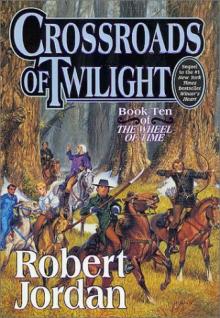 Crossroads of Twilight
Crossroads of Twilight Conan the Invincible
Conan the Invincible The Gathering Storm
The Gathering Storm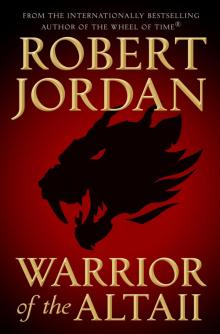 Warrior of the Altaii
Warrior of the Altaii A Crown of Swords
A Crown of Swords The Wheel of Time
The Wheel of Time Towers of Midnight
Towers of Midnight Conan Chronicles 2
Conan Chronicles 2 Conan the Magnificent
Conan the Magnificent New Spring
New Spring What the Storm Means
What the Storm Means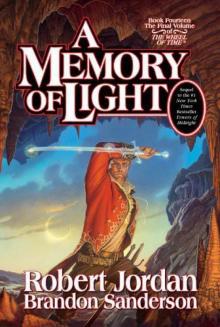 A Memory of Light twot-14
A Memory of Light twot-14 New Spring: The Novel
New Spring: The Novel Towers of midnight wot-13
Towers of midnight wot-13 A Memory Of Light: Wheel of Time Book 14
A Memory Of Light: Wheel of Time Book 14 A Crown of Swords twot-7
A Crown of Swords twot-7 Lord of Chaos twot-6
Lord of Chaos twot-6 The Great Hunt twot-2
The Great Hunt twot-2 The Shadow Rising twot-4
The Shadow Rising twot-4![Wheel of Time-11] Knife of Dreams Read online](http://i1.bookreadfree.com/i1/04/03/wheel_of_time-11_knife_of_dreams_preview.jpg) Wheel of Time-11] Knife of Dreams
Wheel of Time-11] Knife of Dreams The Dragon Reborn twot-3
The Dragon Reborn twot-3 The Wheel of Time Companion
The Wheel of Time Companion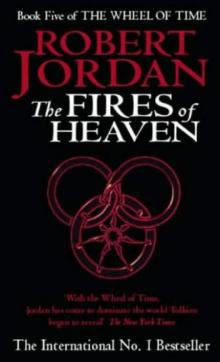 The Fires of Heaven twot-5
The Fires of Heaven twot-5 Prologue to Towers of Midnight
Prologue to Towers of Midnight The Path of Daggers - The Wheel of Time Book 8
The Path of Daggers - The Wheel of Time Book 8 The Path of Daggers twot-8
The Path of Daggers twot-8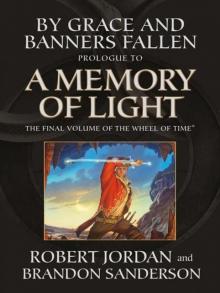 By Grace and Banners Fallen: Prologue to a Memory of Light
By Grace and Banners Fallen: Prologue to a Memory of Light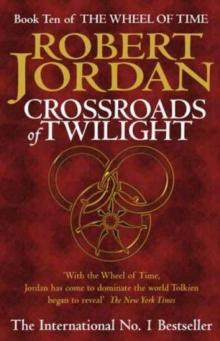 Crossroads of Twilight twot-10
Crossroads of Twilight twot-10 The Gathering Storm twot-12
The Gathering Storm twot-12 Winter's Heart twot-9
Winter's Heart twot-9 Knife of Dreams twot-11
Knife of Dreams twot-11 New Spring: The Novel (wheel of time)
New Spring: The Novel (wheel of time)